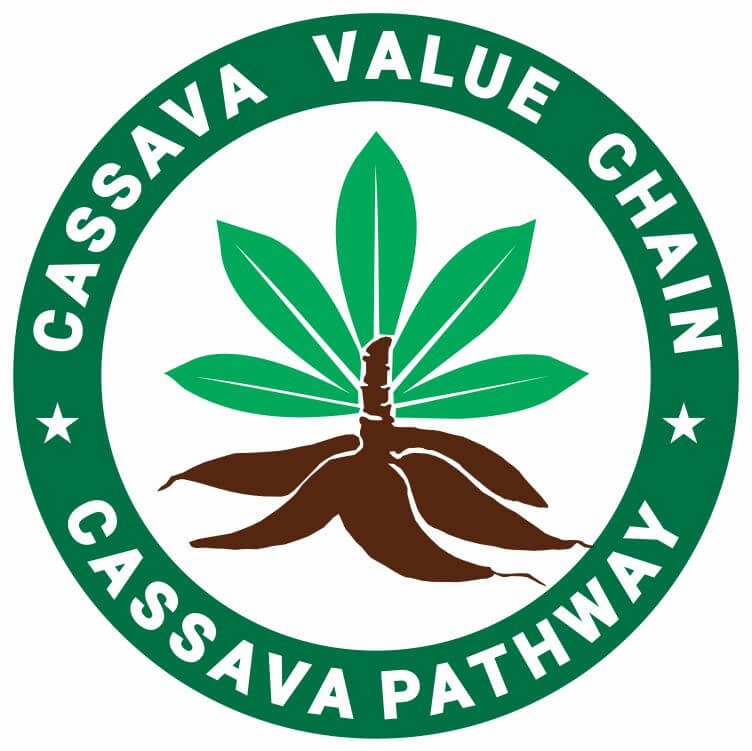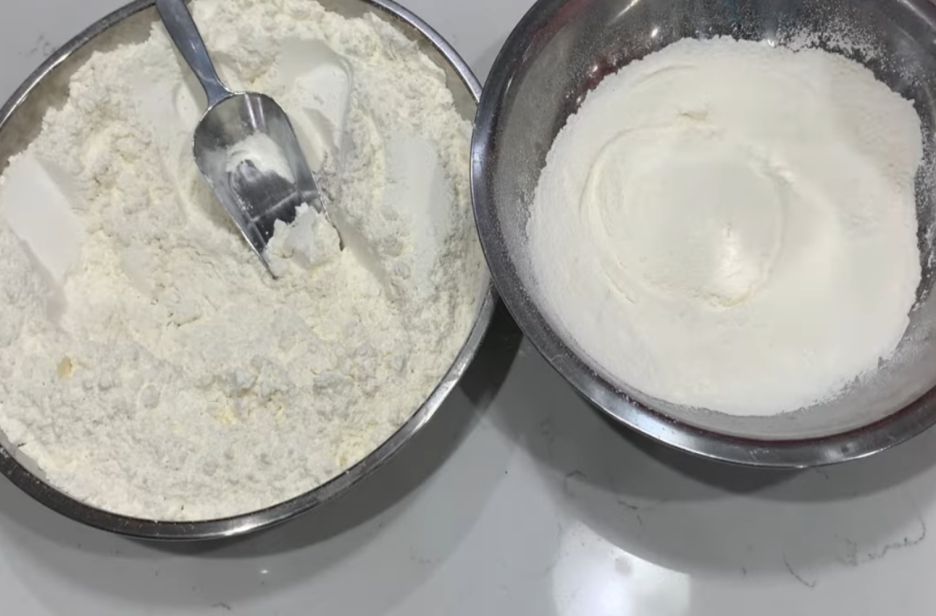Cassava flour vs tapioca flour: Discover their differences, uses, and how to choose the right one for your baking or cooking needs.
Cassava flour and tapioca flour have gained traction as gluten-free and grain-free alternatives, but their differences can be confusing.
Both come from the cassava crop’s root, yet their processing and composition set them apart.
When baking or cooking, you may come across cassava flour and tapioca flour made from the cassava root.
But they aren’t the same as reiterated by Medical News Today. Many confuse cassava flour and tapioca flour, assuming they are the same.
The reality is that they are different in processing, texture, and usage.
Cassava flour is made from the whole root, giving it a more earthy taste and thicker texture It retains fiber and nutrients, making it a closer substitute for wheat flour.
Tapioca flour is extracted from the starch, giving it a fine texture and neutral flavor, ideal for thickening and binding.
Understanding their roles is essential for achieving the right texture in recipes.
These differences affect how they perform in recipes. In this guide, you’ll learn what sets them apart, where to use each, and how to pick the best one for your dishes, whether baking bread, thickening sauces, or creating chewy treats, or if you’re gluten-free, paleo, or just curious about their uses.
Ready to find out which one works for you? Let’s discuss it!
Table of Contents
- An Overview of Cassava Flour and Tapioca Flour
- Cassava Flour vs Tapioca Flour: Key Differences Tabulated
- Cassava Flour vs Tapioca Flour: Texture and Baking Properties
- Which One Should You Choose?
- Cassava Flour vs Tapioca Flour: Health Considerations
- Frequently Asked Questions
- Final Thoughts
An Overview of Cassava Flour and Tapioca Flour
What Is Cassava Flour?
Cassava flour comes from the whole cassava root, a starchy tuber grown in tropical regions. The process starts with peeling, drying, and grinding the root into a fine, beige flour.
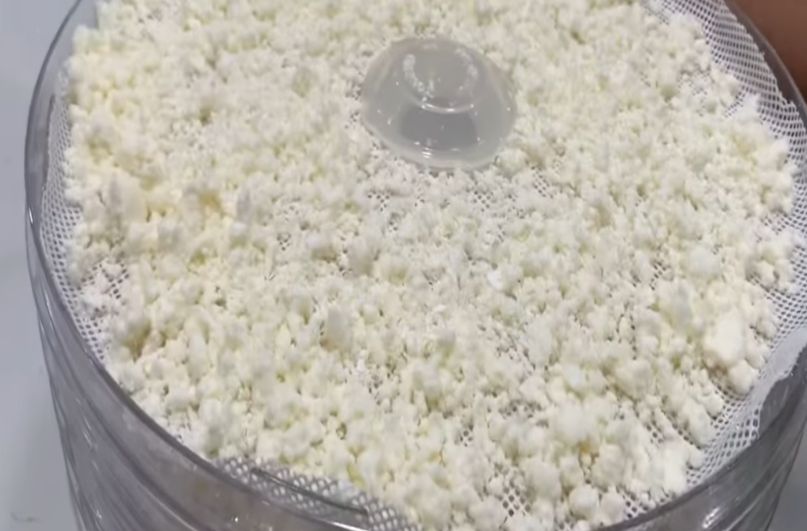
Because it includes the entire root, it keeps its fiber and nutrients, making it a good gluten-free alternative to wheat flour.
It has a slightly earthy flavor. Its texture is slightly grainy but smooth enough for baking, and its off-white color makes it easy to blend into various dishes.
You can use cassava flour in baking to make bread, pancakes, tortillas, and pastries. It also thickens soups and sauces.
Cassava flour is also great for bread, tortillas, and pancakes, and as a thickener in soups and sauces.
Related: Which Will You Use among Cassava Flour and Arrowroot

It’s a versatile substitute, though you may need to adjust recipes since it absorbs more moisture than wheat flour.
Its mild taste works well in sweet and savory dishes. If you’re avoiding gluten, cassava flour is a great option for cooking and baking.
Related: How to Differentiate Tapioca from Arrowroot
What Is Tapioca Flour?
Tapioca flour also comes from cassava, but only the starch is used. Tapioca flour is made by extracting the starch from the cassava root, leaving behind a fine white powder that is almost entirely carbohydrates.

Unlike cassava flour, tapioca flour has no fiber and almost no protein, making it purely starch. It thickens soups, sauces, and gravies. In baking, it adds chewiness to gluten-free bread, cookies, and pastries.
It has a neutral taste with a hint of sweetness and is often used as a thickener for sauces, soups, and puddings.
It’s also the main ingredient in tapioca pearls used in boba pearls, bubble tea, and puddings.
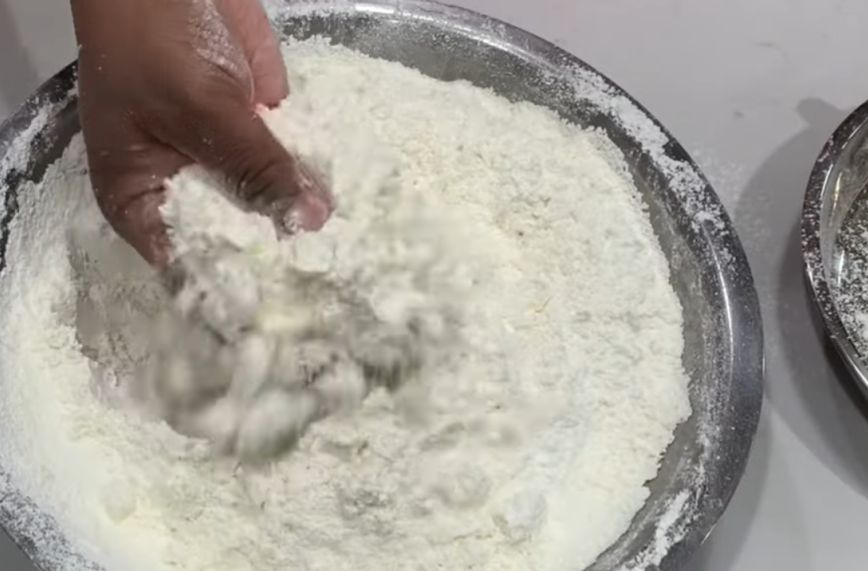
Though it lacks fiber and protein, it’s commonly used with other gluten-free flour to improve the texture of baked goods.
If you need a neutral-flavored thickener or a way to improve texture, tapioca flour is a great choice.
SIDE NOTE: The making of cassava flour and tapioca flour is quite easy, and you can make them at home with just your blender and sieves. See more on how to make yours at home.
Related Posts
- Where to Buy Cassava Flour in Bulk
- Is Cassava Flour Free of Gluten?
- Cassava Flour Recipe Categories
- Is there Cyanide in Cassava Flour?
- Almond Flour vs Cassava Flour
- Cassava Flour vs Wheat Flour
- Cassava Flour vs Coconut Flour
- How Do Cassava Flour and Chickpea Flour Differ?
Cassava Flour vs Tapioca Flour: Key Differences Tabulated
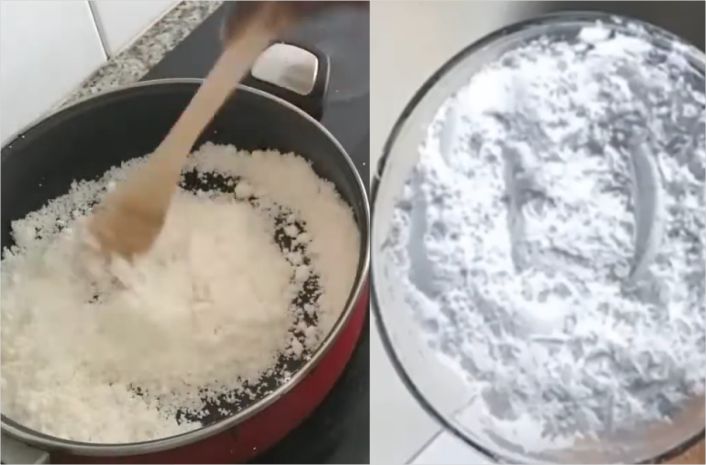
Here is the cassava flour and tapioca flour we made at home a few hours ago. You can make the two through the same process.
You extract the tapioca flour along the way, while the cassava flour is obtained at the end.
You can see that the cassava flour on the right is somehow grainy and off-white, while the tapioca flour on the right is smooth and bright white.
Here are the differences between the two:
Both flours come from the cassava root but are processed differently, with different textures and culinary applications.
Here’s a tabulated breakdown:
| Feature | Cassava Flour | Tapioca Flour |
|---|---|---|
| Source | Whole cassava root | Starch extracted from cassava |
| Processing | Peeled, dried, and ground | Starch is extracted, washed, and dried |
| Texture | Slightly grainy | Ultra-fine and smooth |
| Color | Off-white/beige | Bright white |
| Nutritional Value | Higher in fiber, contains some vitamins | Pure starch, low fiber, minimal nutrients |
| Taste | Mildly nutty | Neutral with slight sweetness |
| Best Uses | Baking, tortillas, sauces | Thickening, binding, gluten-free baking |
| Gluten-Free | Yes | Yes |
These differences make cassava flour better suited for structured baking, while tapioca flour is ideal for thickening and improving texture.
Cassava Flour vs Tapioca Flour: Texture and Baking Properties
Cassava flour adds structure and density to baked goods, making it a good choice for gluten-free bread, pancakes, and cookies. Its fiber content supports digestion and gives a slightly nutty taste.
Tapioca flour creates lighter, crispier textures. It’s commonly used to thicken soups and sauces, add chewiness to puddings, and improve dough elasticity in baked goods.
Best for Baking
When choosing between cassava and tapioca flour for baking, consider the texture you want:
| Baking Goal | Best Flour Choice |
| Bread & Tortillas | Cassava Flour |
| Cakes & Muffins | Cassava Flour |
| Chewy Cookies | Tapioca Flour |
| Crispy Pie Crusts | Tapioca Flour |
| Gluten-Free Mixes | Both (Cassava for structure, Tapioca for binding) |
If you’re making bread or muffins, cassava flour is the better option.
For cookies and pastries that need chewiness or crispiness, tapioca flour works best.
Best as a Thickening Agent
Cassava flour works well as a wheat flour substitute, while tapioca flour is better for thickening and improving texture.
If you need a flour that mimics traditional baking, cassava flour is the better choice.
If you’re looking for a smooth, starchy thickener, tapioca flour does the job.
| Factor | Cassava Flour | Tapioca Flour |
| Thickening Power | Moderate | Strong |
| Appearance | Slightly cloudy | Glossy, clear |
| Flavor Impact | Mild, slightly nutty | Neutral |
| Best For | Hearty soups, stews | Sauces, puddings, pie fillings |
Tapioca flour is the better choice for glossy, transparent thickening. Cassava flour works well in heartier dishes.
Which One Should You Choose?
Your choice depends on what you are making. Here’s how to decide:
Choose Cassava Flour If:
- You need a 1:1 wheat flour substitute in gluten-free baking.
- You want a higher fiber option for digestive health.
- You are making bread, tortillas, or muffins that require more structure.
- You prefer flour with nutritional benefits beyond just starch.
Choose Tapioca Flour If:
- You need a thickener for soups, sauces, or gravies.
- You want to add chewiness to recipes like Brazilian cheese bread.
- You are making gluten-free blends and need a binding agent.
- You want to create a light, airy texture in baked goods.
For best results, combining both flours in gluten-free baking provides structure (cassava flour) and elasticity (tapioca flour).
Cassava Flour vs Tapioca Flour: Health Considerations
Both flours are gluten-free, but cassava flour has a higher fiber content, which supports digestion.
Tapioca flour is almost pure starch, so it may not be ideal for those watching blood sugar levels.
| Health Aspect | Cassava Flour | Tapioca Flour |
| Fiber Content | High | Low |
| Glycemic Index | Lower | Higher |
| Calories | Moderate | High |
| Nutritional Value | More nutrients | Mostly starch |
If you need a more nutritious, fiber-rich option, go with cassava flour. If you want light, easily digestible flour, tapioca is a good choice.
Nutritional Breakdown of Cassava Flour and Tapioca Flour
If you’re looking for a gluten-free flour, both work well, but their macronutrient content sets them apart.
Cassava Flour: A More Nutritious Option
Cassava flour is made from the whole cassava root, giving it more fiber, vitamins, and minerals.
- Calories: 330 per 100 grams
- Carbohydrates: 78 grams
- Protein: 3 grams
- Fat: 1.5 grams
- Fiber: 7 grams
- Nutrients: Contains vitamin C, potassium, and manganese
Its fiber supports digestion, while its nutrient content makes it a better option for balanced nutrition.
Tapioca Flour: Pure Starch with Minimal Nutrients
Tapioca flour, or tapioca starch, is extracted from the starchy part of cassava, leaving little nutritional value.
- Calories: 360 per 100 grams
- Carbohydrates: 88 grams
- Protein & Fat: Negligible
- Fiber: None
- Nutrients: Lacks vitamins and minerals
Here’s a clear table comparing the nutritional breakdown of cassava flour and tapioca flour:
| Nutrient | Cassava Flour (per 100g) | Tapioca Flour (per 100g) |
|---|---|---|
| Calories | 330 kcal | 360 kcal |
| Carbohydrates | 78g | 88g |
| Protein | 3g | Negligible |
| Fat | 1.5g | Negligible |
| Fiber | 7g | 0g |
| Vitamins & Minerals | Vitamin C, Potassium, Manganese | None |
Frequently Asked Questions
Are cassava flour and tapioca flour the same?
No, cassava flour comes from the whole root, while tapioca flour is pure starch extracted from the cassava root.
Which flour is better for baking?
Cassava flour provides structure for bread and muffins, while tapioca flour enhances chewiness in cookies and crispiness in crusts.
Is tapioca flour a good thickener?
Yes, tapioca flour is an excellent thickener for soups, sauces, and puddings, creating a glossy, smooth texture.
Which flour is healthier?
Cassava flour is healthier as it contains fiber, vitamins, and minerals, whereas tapioca flour is mostly starch with minimal nutrients.
Final Thoughts
In cassava flour vs tapioca flour, we have been able to establish their differences bordering on nutrition, production, baking behaviors, and best uses.
Both cassava flour and tapioca flour have unique strengths.
Cassava flour is better for structured baking and nutritional benefits, while tapioca flour is better for thickening and texture enhancement in gluten-free cooking.
If you bake often, keeping both in your pantry gives you flexibility.
Use cassava flour for dense, wheat-like results and tapioca flour when you need chewiness, crispiness, or thickening.
Now that you know the differences, you can confidently choose the right flour for your next recipe. Which one will you try first?

Chimeremeze Emeh is a writer and researcher passionate about Africa’s most transformative root crop—cassava. Through his work at cassavavaluechain.com, he explores the entire cassava industry, from cultivation and processing to its diverse applications in food, health, and industrial use.
He also writes for palmoilpalm.com, where he shares his extensive experience and deep-rooted knowledge of palm oil, covering red palm oil, palm kernel oil, and refined products. His work there reflects his lifelong connection to agriculture and his commitment to promoting sustainable value chains in Africa.
Driven by curiosity and purpose, Chimeremeze aims to shed light on how cassava continues to empower communities, strengthen food systems, and link traditional farming wisdom with modern innovation.
